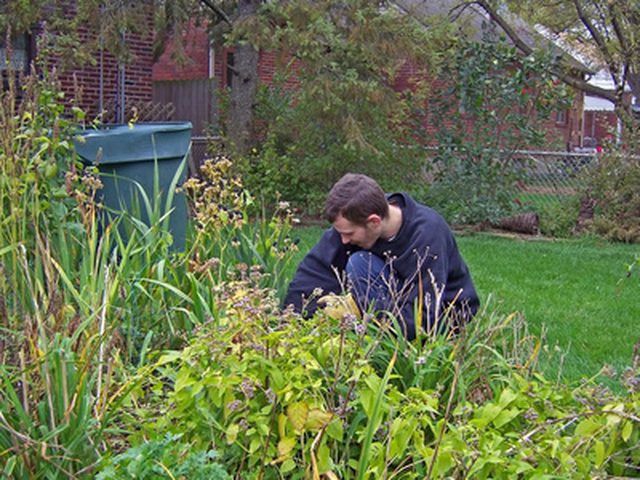Bulbs
Flower Basics
Flower Beds & Specialty Gardens
Flower Garden
Garden Furniture
Garden Gnomes
Garden Seeds
Garden Sheds
Garden Statues
Garden Tools & Supplies
Gardening Basics
Green & Organic
Groundcovers & Vines
Growing Annuals
Growing Basil
Growing Beans
Growing Berries
Growing Blueberries
Growing Cactus
Growing Corn
Growing Cotton
Growing Edibles
Growing Flowers
Growing Garlic
Growing Grapes
Growing Grass
Growing Herbs
Growing Jasmine
Growing Mint
Growing Mushrooms
Orchids
Growing Peanuts
Growing Perennials
Growing Plants
Growing Rosemary
Growing Roses
Growing Strawberries
Growing Sunflowers
Growing Thyme
Growing Tomatoes
Growing Tulips
Growing Vegetables
Herb Basics
Herb Garden
Indoor Growing
Landscaping Basics
Landscaping Patios
Landscaping Plants
Landscaping Shrubs
Landscaping Trees
Landscaping Walks & Pathways
Lawn Basics
Lawn Maintenance
Lawn Mowers
Lawn Ornaments
Lawn Planting
Lawn Tools
Outdoor Growing
Overall Landscape Planning
Pests, Weeds & Problems
Plant Basics
Rock Garden
Rose Garden
Shrubs
Soil
Specialty Gardens
Trees
Vegetable Garden
Yard Maintenance
How to Apply Brush Killer
How to Apply Brush Killer. Gardeners everywhere encounter unwanted trees or vines blown in by wind, dropped by birds, or carried in by mammals. Brush killer permanently eliminates woody plants in areas where digging or pulling is impractical. The plant's vascular system transports the herbicide into the roots and branches; treated brush and stumps...

Gardeners everywhere encounter unwanted trees or vines blown in by wind, dropped by birds, or carried in by mammals. Brush killer permanently eliminates woody plants in areas where digging or pulling is impractical. The plant's vascular system transports the herbicide into the roots and branches; treated brush and stumps show injury in a day and will die in a week. Systemic herbicides do not transfer into the soil or kill grass and sedges when applied correctly, making brush killer an environmentally safe option.
Things You'll Need
Brush killer
Garden sprayer or spray bottle
Foam paint brush or dauber
Tree saw or lopper
Purchase brush killer at your local hardware or home and garden store. Look for the active ingredient Triclopyr, which is designed for use on woody plants. Broadleaf weed and grass killers containing Glyphosate are ineffective on woody species.
Study the area when choosing the best application method. A combination of methods may be required. Consider drift on a windy day, drip onto desirable plants or root systems, and runoff into water or sewer systems. Check for baby birds and beneficial insect cocoons; weigh delaying application or relocating wildlife before application of the brush killer.
Verify the growth pattern of plants you wish to eliminate. Some types of trees and shrubs have root grafts or suckers connected to others in the stand. The main plant will be damaged or killed if herbicide is used to kill the suckers. Sever the roots of suckering plants before treating.
Wear protective clothing. Brush killer's active ingredient is damaging to eyes and skin. Keep children or pets away from treated plants until the herbicide is dry.
Spray brush killer directly on the foliage when eliminating small amounts of woody brush and the surrounding plants are not at risk of exposure. Cover foliage surfaces thoroughly while minimizing drip. Herbicide spray can drift in the breeze; apply on a calm day. Stand upwind to avoid contact with your clothing and skin.
Paint herbicides onto leaves when eliminating small amounts of woody brush and surrounding plants need to be saved. Use a sponge paintbrush or dauber. Place newspaper or plastic bags under or around the treated brush to prevent drip onto other plants or root systems.
Cut off woody brush near the ground and apply brush killer directly onto the stump. Sweep away any dirt or sawdust and use a paintbrush or dauber to apply. The vascular cells near the bark will transport the herbicide into the roots, killing the stump and preventing re-growth.
Tips & Warnings
Apply brush killers during the active growing season.
Read all safety labels for mixing, application and disposal of product.
Never cut poison ivy or poison oak vines. Apply brush killer by spraying or daubing on the leaves. Poison ivy and poison oak have extensive root systems and may take a few years to kill completely.